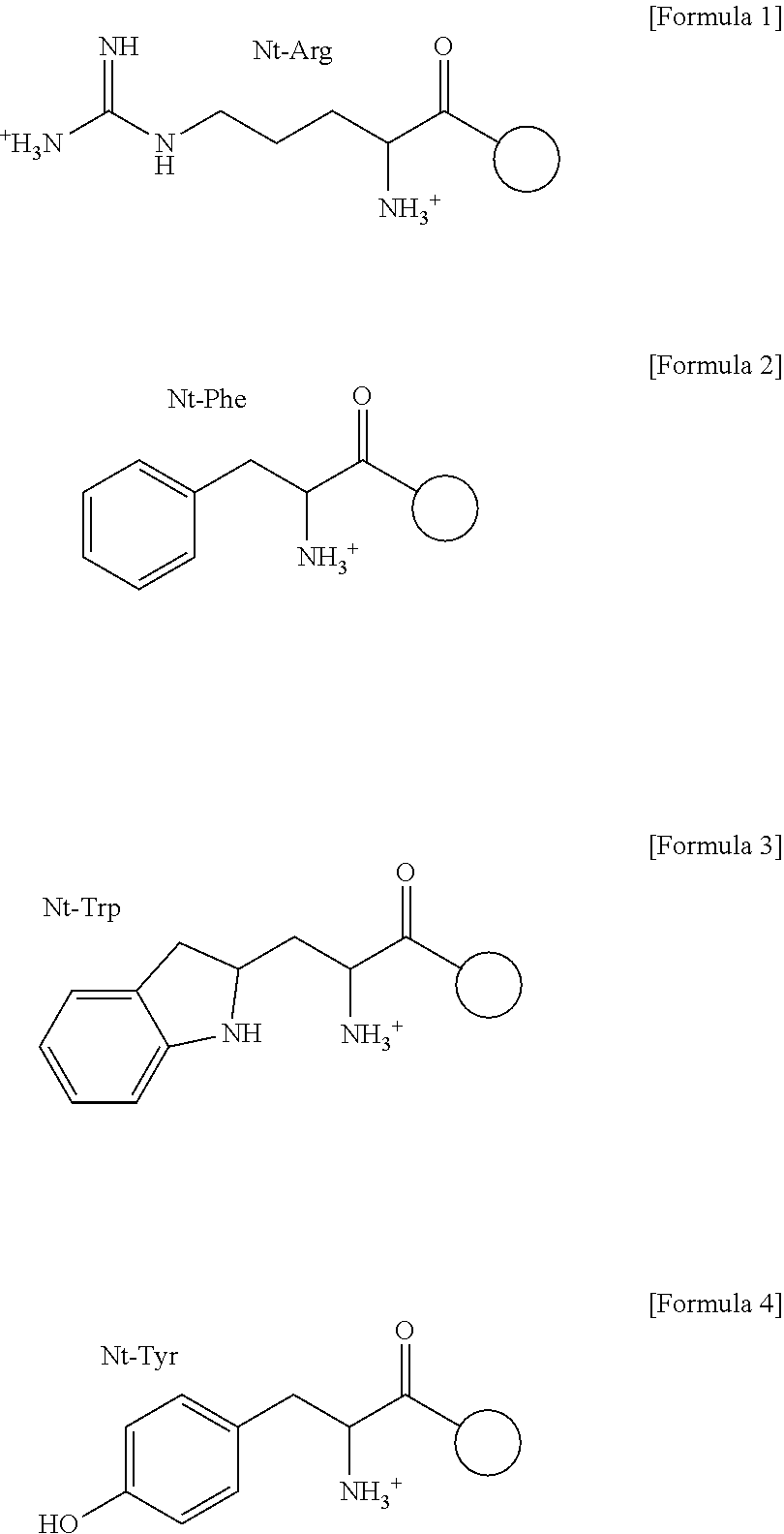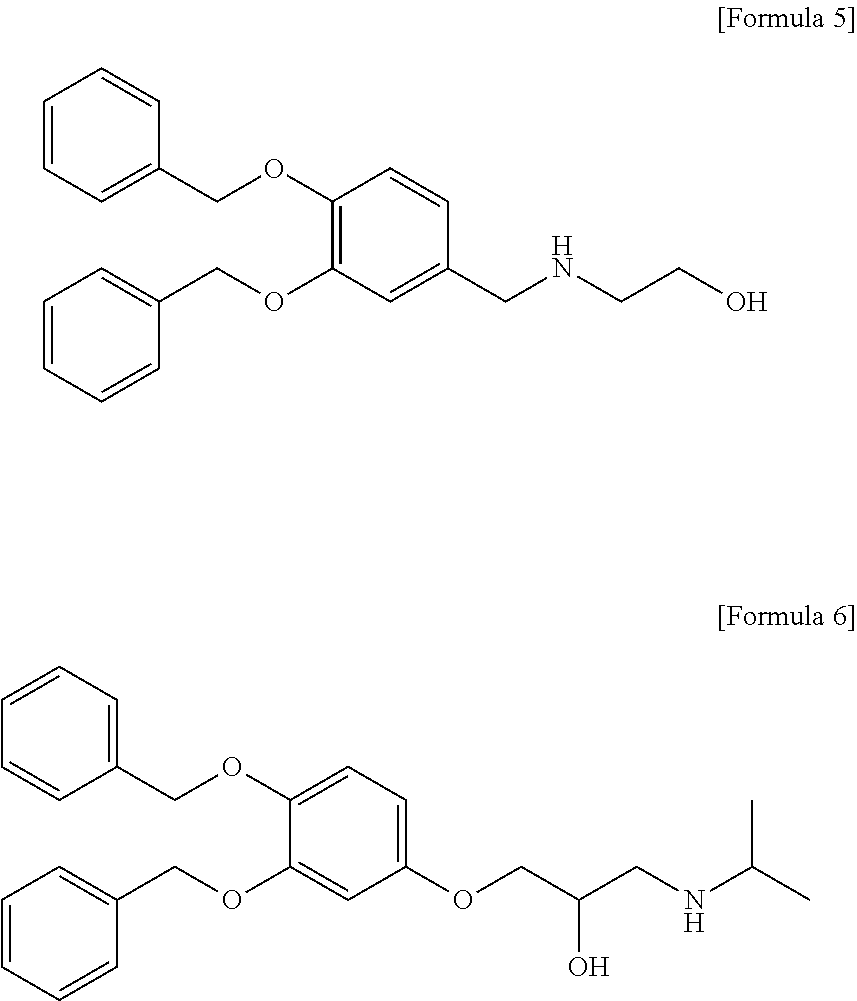Prevention and treatment of neurodegenerative diseases through autophagy activity mediated by a synthetic ligand or arginylated BIP binding to the P62 ZZ domain
a technology of arginylated bip and autophagy activity, which is applied in the direction of nervous disorders, drug compositions, peptide/protein ingredients, etc., can solve the problems of no longer observed positive effects of levodopa treatment, many limitations in the treatment of parkinson's and huntington's disease, and toxic to neurons
- Summary
- Abstract
- Description
- Claims
- Application Information
AI Technical Summary
Benefits of technology
Problems solved by technology
Method used
Image
Examples
example 1
ation of p62 as a Novel N-Recognin
[0089]To identify novel N-recognins binding to N-degron, a peptide was synthesized by attaching an N-degron to the N-terminus. Then, the kinds of proteins that could bind to the synthesized peptide in rat tissue extracts was investigated.
[0090]Particularly, the X-peptide pull down assay and mass spectroscopy related iTRAQ (Isobaric tags for relative and absolute quantitation) were performed. As the N-end rule interaction protein, rat testis extract was used and biotin-labeled X-peptide (R11 sequence: RIFSTIEGRTY (type 1)) fixed on streptavin beads, F11 sequence (FIFSTIEGRTY (type 2), and V11 (stabilized control) (VIFSTIEGRTY) were also used (FIGS. 5a and d). The 10-mer linker connected to X-peptide was originated from Sindbis virus polymerase nsP4, the substrate of N-end rule. The mixture was diluted with 5×PBS, followed by culture at 4□ overnight. Proteins pulled down by using each X-peptide were labeled with different fluoresceins by iTRAQ. Based ...
example 2
ation of p62 as an N-Recognin Capable of Binding to Nt-Arg, Nt-Phe, Nt-Trp, and Nt-Tyr
[0093]The following experiment was performed in order to more clearly identify the p62 protein in Example .
[0094]Particularly, Western blotting was performed by using the mouse monoclonal p62 antibody (1:500, ab56416, Abcam, Cambridge, UK) produced by the full-length recombinant protein corresponding to amino acids 1˜440 of human p62. As a result, as shown in FIG. 5d, in vitro transcribed and translated p62 showed a strong binding affinity specifically to the R11 peptide but a weak binding affinity to the F11 peptide and no significant binding to the V11-peptide (FIG. 5d). The R11 peptide was able to precipitate p62 at the efficiency of at least 40%, based on the concentration used for the experiment herein, while the F11 peptide showed the efficiency of 5%. The results were confirmed by a dipeptide competition assay. The RA peptide (Arg-Ala) competed most effectively with R11 peptide in binding of...
example 3
n of the Binding Force of p62 to Nt-Arg and Nt-Phe
[0098]The following experiments were performed to determine the binding constants of p62 to Nt-Arg and Nt-Phe.
[0099]Particularly, p62-D3-GST was expressed in E. coli, followed by purification with 50% purity. The biotin-labeled X-peptide was fixed on a streptavidin-coated chip using surface plasmon resonance biosensors (Biacore), and the p62-D3-GST protein was then inserted to the fixed peptide.
[0100]As a result, as shown in FIG. 6, p62-D3-GST strongly bound to the R11 peptide, weakly bound to F11, and did not bind to V11 (FIG. 6). Kd values of R11 and F11 were 44 nM and 3.4 μM, respectively. In particular, the binding force of p62 to Nt-Arg was about 50 times higher than that of N-recognins containing a URB box (Kd, 3.2 μM). The results indicate that p62 is a novel drug target.
PUM
| Property | Measurement | Unit |
|---|---|---|
| pH | aaaaa | aaaaa |
| pH | aaaaa | aaaaa |
| hydrophobic | aaaaa | aaaaa |
Abstract
Description
Claims
Application Information
 Login to View More
Login to View More - R&D
- Intellectual Property
- Life Sciences
- Materials
- Tech Scout
- Unparalleled Data Quality
- Higher Quality Content
- 60% Fewer Hallucinations
Browse by: Latest US Patents, China's latest patents, Technical Efficacy Thesaurus, Application Domain, Technology Topic, Popular Technical Reports.
© 2025 PatSnap. All rights reserved.Legal|Privacy policy|Modern Slavery Act Transparency Statement|Sitemap|About US| Contact US: help@patsnap.com



